What is gray hair blending? We talk a lot about ditching the dye, but what if you want a more subtle, gentle grow out of your gray? We’re digging into the nitty-gritty on what even is gray blending, why you would want to do it and how to make it happen for your hair – keep reading for the details!
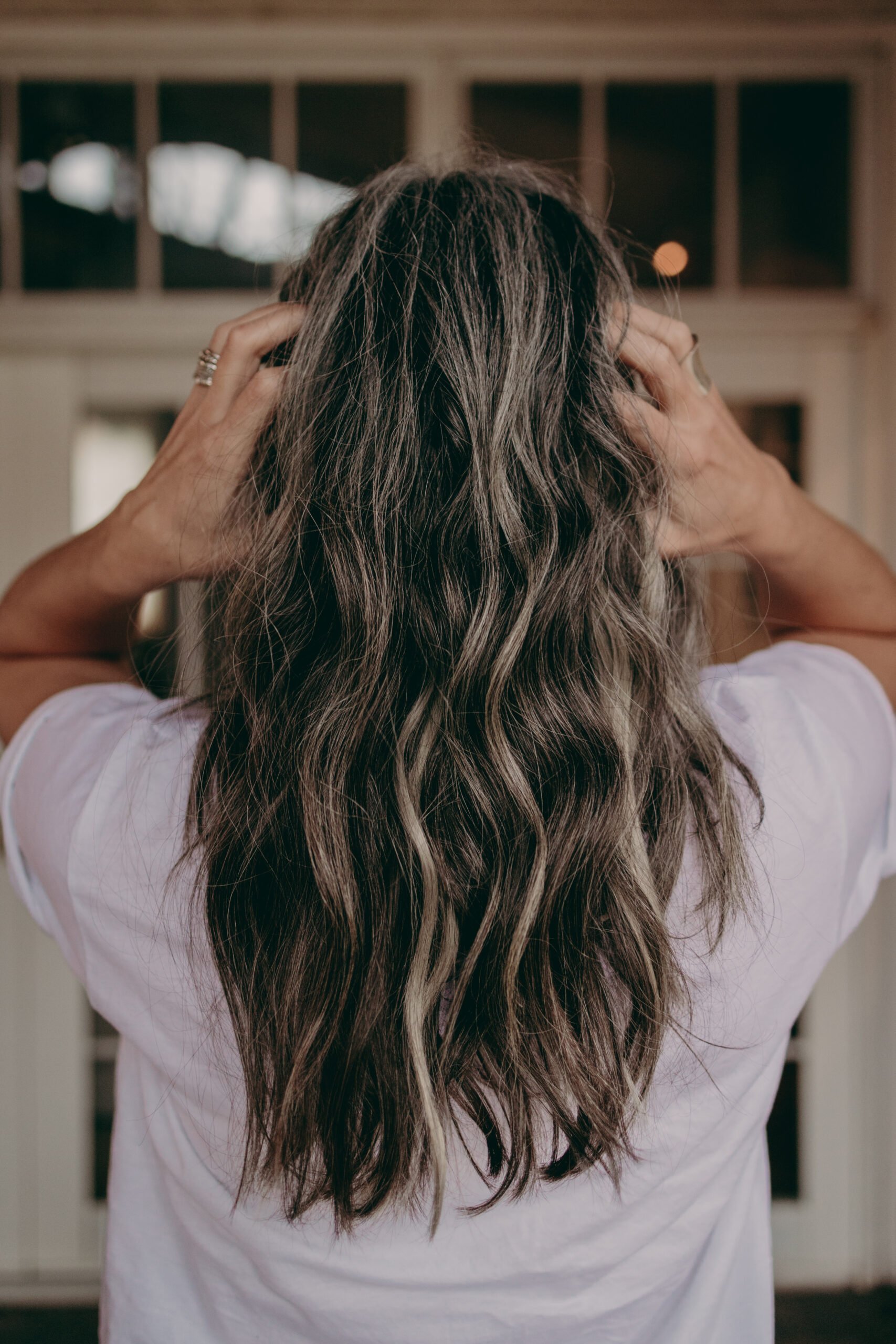
By: Lisa Fennessy
Meet the Expert
Faisal Ahmed Hammadi
Faisal is a trichologist based in the UAE and co-founder of poweryourcurls.com. He is a graduate of the Institute of Trichologist and is considered to be an expert in the field.
Website / Twitter
IN THIS POST:
- There is no universal definition for “gray hair blending”
- What is gray hair blending
- Gray blending pros and cons
- Gray hair blending takeaways
- Gray hair blending FAQ
There is no universal definition for “gray hair blending”
In a linguistics class I took as part of my ASL Interpreting B.S. at Northeastern University, we talked about the formation of new words in language. At that time, the word “email” had just hit the scene and I remember seeing Deaf people use MANY DIFFERENT signs for email. I witnessed the same thing happen with concepts like “friend me” and “Instagram” and the like. Over time, what tends to happen is a sign, or a small set of signs, naturally becomes the norm and that’s what most people will use going forward.
And this happens in all languages and all cultures. Language is living, it’s evolving and forever changing as the world changes around us.
In English, we have words that stick and words that never stuck. Like how about “acersecomicke” that showed up in 17th-century dictionaries, meaning “one who’s hair was never cut”. Or “deipnosophist” to describe a person who is good at table talk. And don’t even get me started on Paris Hilton’s 2019 “sliving”, lol.
I say all this because although “gray hair blending” is gaining interest as a way to rep your grays, it’s still in its infancy and no universal definition has “stuck” or been commonly agreed upon by stylists and users…yet. As gray hair blending gets used more and talked about more (or not), time will decide if this becomes a concept that holds a universal meaning or one that falls by the wayside. BUT we are not there yet, hence why there is so much buzz and confusion around “what is gray blending.”
To further illustrate this point, Faisal Ahmed Hammadi, trichologist and co-founder of poweryourcurls.com agrees. He says, “There is no universal definition for gray hair blending, but clients can just explain that they want to blend their grays in a natural way.” He describes gray hair blending in general as a personalized color process that blends gray hair growth with a color that suits.
Hair stylist/colorist Chelsea Bearson (Nicolle’s stylist who is a marvel with color correction) gave a more concrete definition, saying, “Gray blending is basically for the client who wants to either start the process to go all the way gray, or has gray and doesn’t care to fully cover it. So we ‘blend’ the gray by allowing dimension that somewhat disguises dull natural hair, but is less maintenance than full coverage color. Usually this is a foil to add highlights and lowlights to the natural gray existing, or it is a more sheer all over color that allows the gray to show through slightly.”
Digging in a bit more we see Vogue describe gray hair blending as, “A subtle hair color application that oscillates between highlights and balayage. Like a game of chiaroscuro, the colorist will first lighten large sections of hair with a light balayage, then accentuate the effect on a few finer strands to blend in the gray hair naturally present.”
And then Glamour saying it’s, “Like O.G. balayage, [this] technique creates light and shade throughout your hair. Sweeping sections of highlights are blended seamlessly in among other strands to break up blocks of color and ensure hair looks multidimensional. The difference here is that the tones of the highlights are deliberately chosen to blend away grays or spotlight them.”
[I have to make a note here: I take umbrage with the pics in the Vogue and Glamour articles. They’re not gray blending—they’re just examples of beautiful gray hair! When we’re talking about this trend, we need to showcase gray blending with natural hair colors too, so we have more examples in case women lean this way when going gray. See below for some true examples of gray hair blending.]
So when I asked my hairdresser, (voted Atlanta’s #1 colorist) how she would define “gray hair blending” and she answered with, “Are you talking about blending gray with previous color?”—answering a question with a question—I thought it a fitting conclusion to my research, lol.
As you can see, there is no real agreed upon definition for gray hair blending, so I really want the takeaway of this post to be: if you walk into a salon and ask for “gray blending” or “gray hair blending” be prepared to be disappointed. No one can read your mind and what you think gray blending is will most likely be different from what that stylist thinks it is. Instead, describe exactly what you want, bring pictures and be open to taking advice.
Don’t have any pictures to bring with you? Here’s are couple pics of FOR REAL gray hair blending to help spark some inspo!
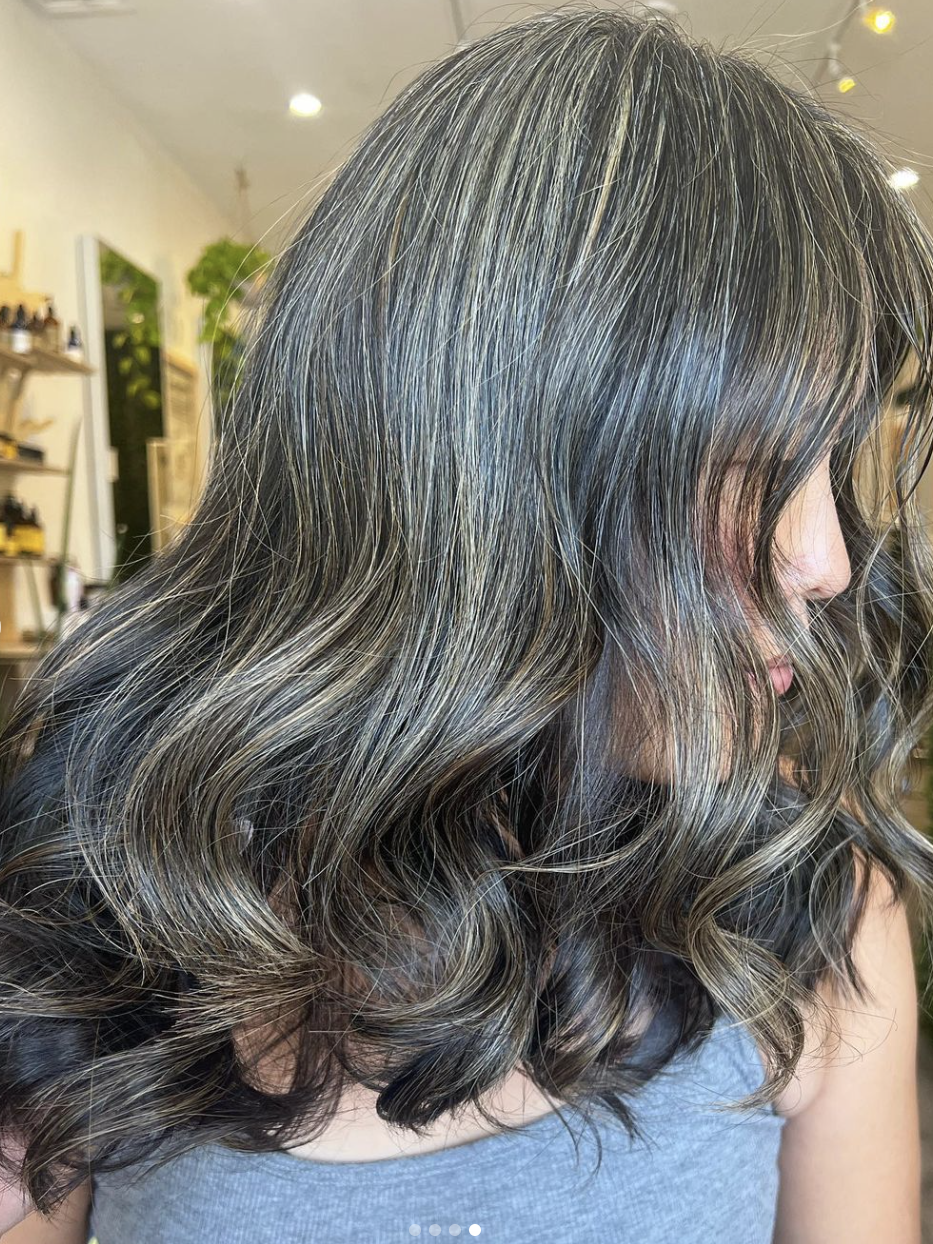
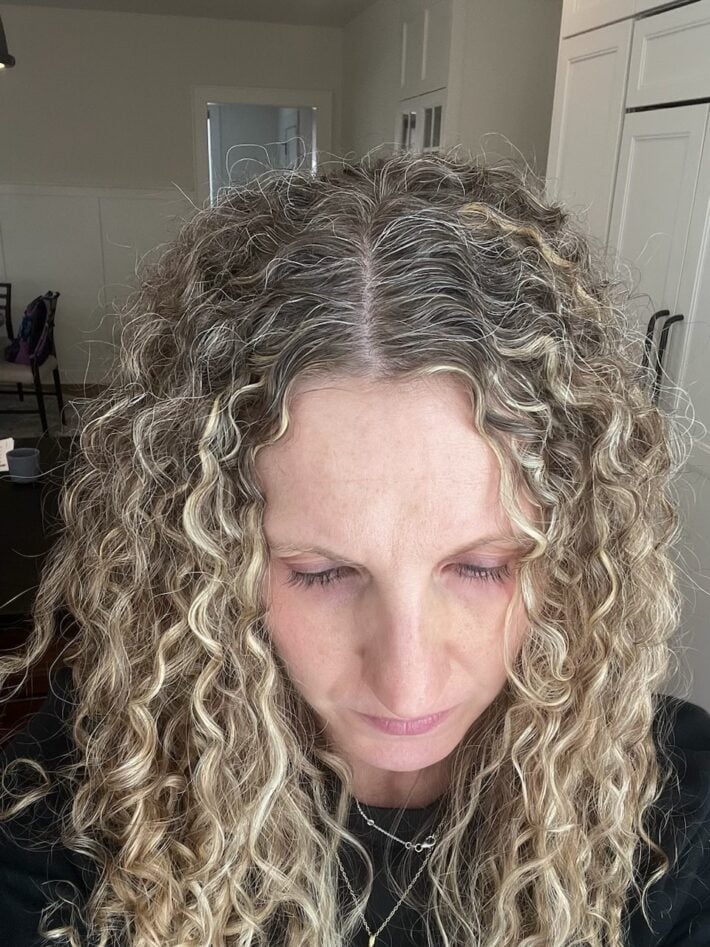
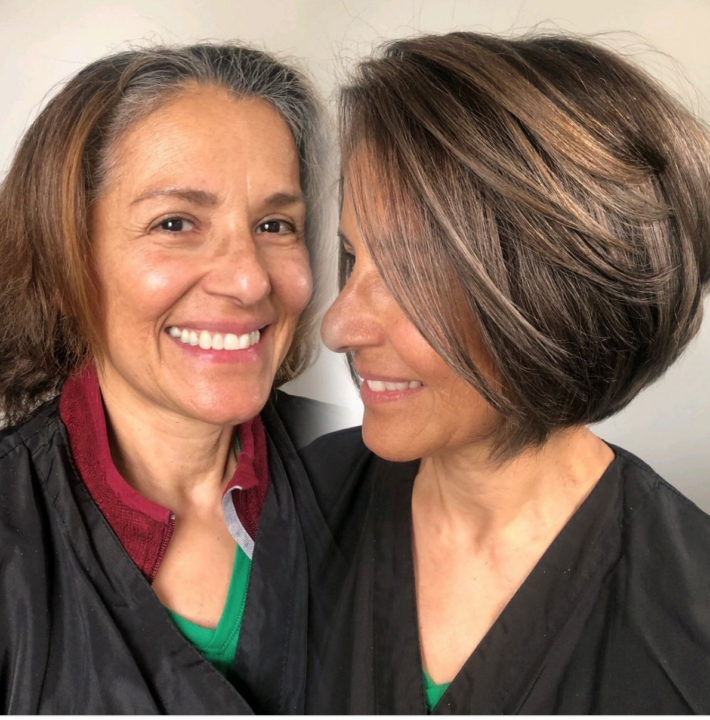
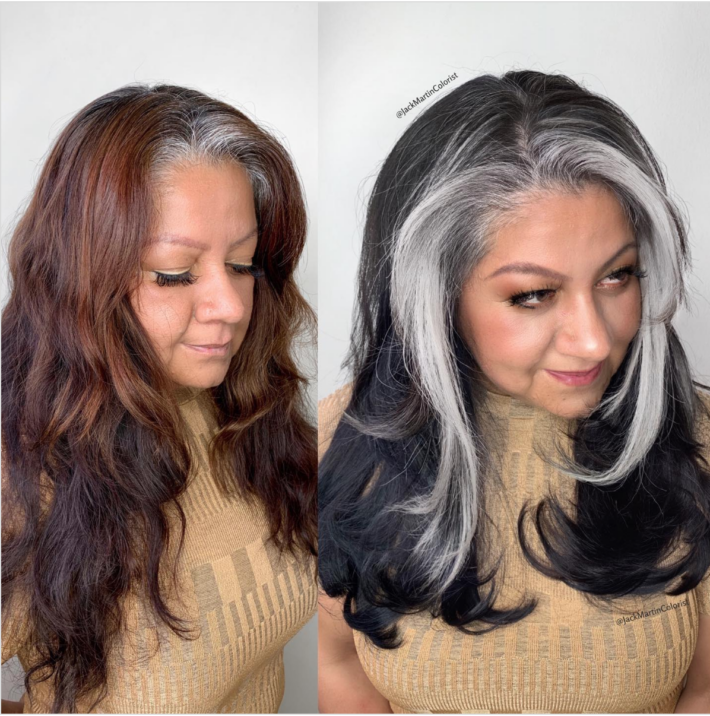
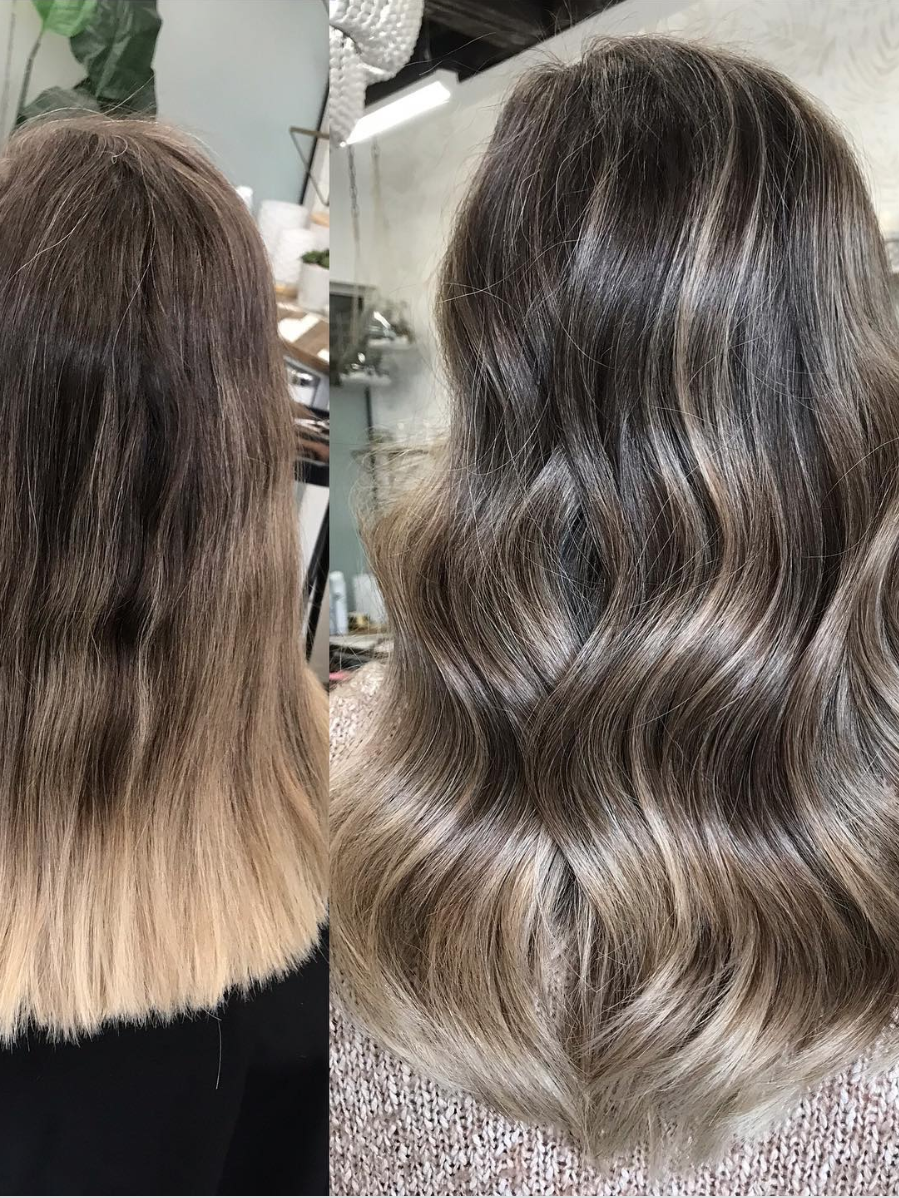
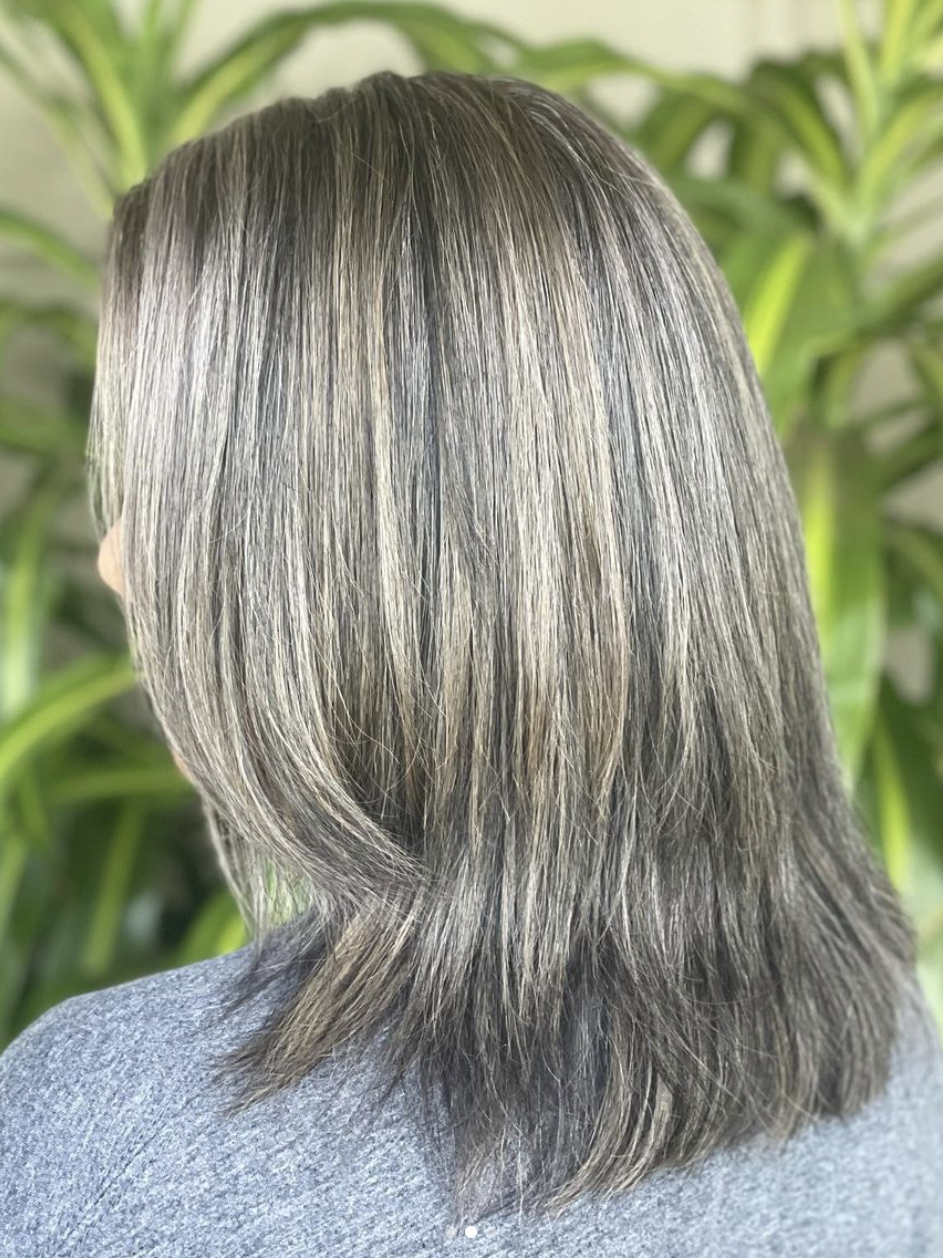
What is gray hair blending?
Since there is no universal definition of gray blending, here are some of the techniques that can be used to achieve a blended look…
- Adding highlights and / or lowlights
- Adding highlights around the face
- Adding color back into the hair in certain sections
- Lifting color out of the hair in certain sections
- Adding extensions
- Using foil techniques, cap techniques or painting techniques
- And so much more.
Depending on your hair type and gray hair patterns, one or more of these techniques may better suit you over others. I’ve seen readers transition to gray hair with lowlights, blend their gray hair with their dark hair and use balayage as a way to transition to gray hair. And because gray hair is different on everyone, what gray hair blending looks like on you will not look the same on someone else.
Another option to consider is the dye strip method for gray hair.
RELATED: Makeup tips for gray hair.
Gray blending pros and cons
Pros:
- This is a fun way to play with color.
- It’s especially a good option for people with naturally lighter toned hair.
- You can make this process whatever you want, i.e. a few highlights around the face or lowlights throughout or a blend of both or something totally different.
- It’s an empowering way to practice self love.
Cons:
- It’s not for everyone.
- It could end up causing damage or breakage (especially for dark hair).
- It can be expensive to keep up (like getting highlights or foils).
- It’s hard to retain the tone of gray / silver highlights – they tend to fade and wash out quickly.
- It’s very hard to match the pattern of people’s gray hair (which varies individual to individual) so if you are going for a “natural look” this might not be the option for you.
- In the end, you may end up feeling like you’ve started from square one again—now having to grow out the newly treated hair.
- You need to find a colorist who is skilled at doing this as there is a huge margin for error here.
Gray hair blending takeaways
After looking into gray hair blending as a way to don grays, there are a few key things to keep in mind when deciding if this is an option you want to explore.
- This tactic is best for hair that has been undyed (i.e. not dyed full color. High/lowlights can work).
- It works best when you don’t yet have a full head of gray hair—the highlights that are often added can mimic a still-coming-in gray pattern more easily.
- Be CLEAR about what you want with your stylist, especially if they’re not a gray hair blending expert. Bring photos, show examples and verbally understand what you’re asking for before you go in.
- If you have darker hair, you’ll need to make sure you have an experienced colorist to manage the process, to avoid damaging your hair too much.
Would you try gray hair blending? Have you tried gray hair blending?
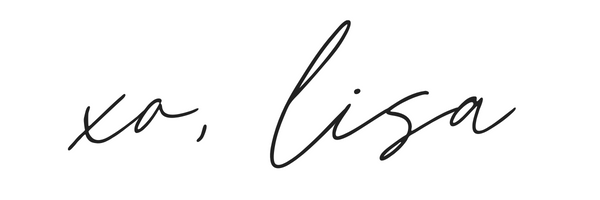
P.S. Be sure to take good care of your grays with a good quality purple shampoo for gray hair.
TNK Team Note: This article may contain affiliate links, including Amazon affiliate links. As an Amazon Associate, we earn from qualifying purchases. TNK uses affiliate links as a source for revenue to fund operations of the business and to be less dependent on branded content. TNK stands behind all product recommendations. Still have questions about these links or our process? Feel free to email us.
RELATED: It’s 1000 degrees, here’s how to manage frizzy hair.

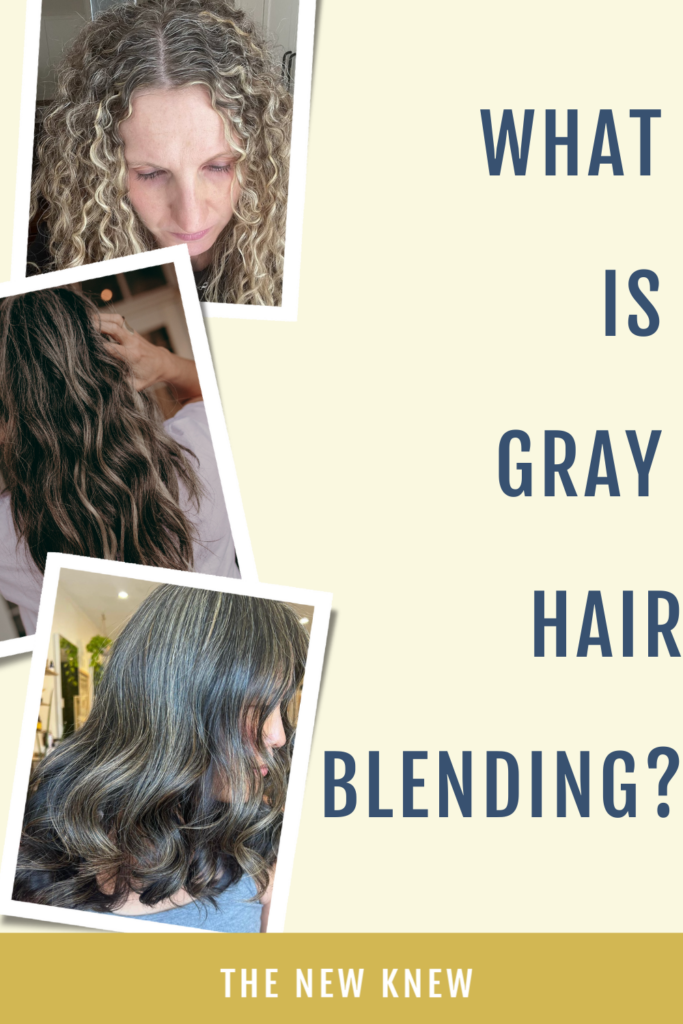
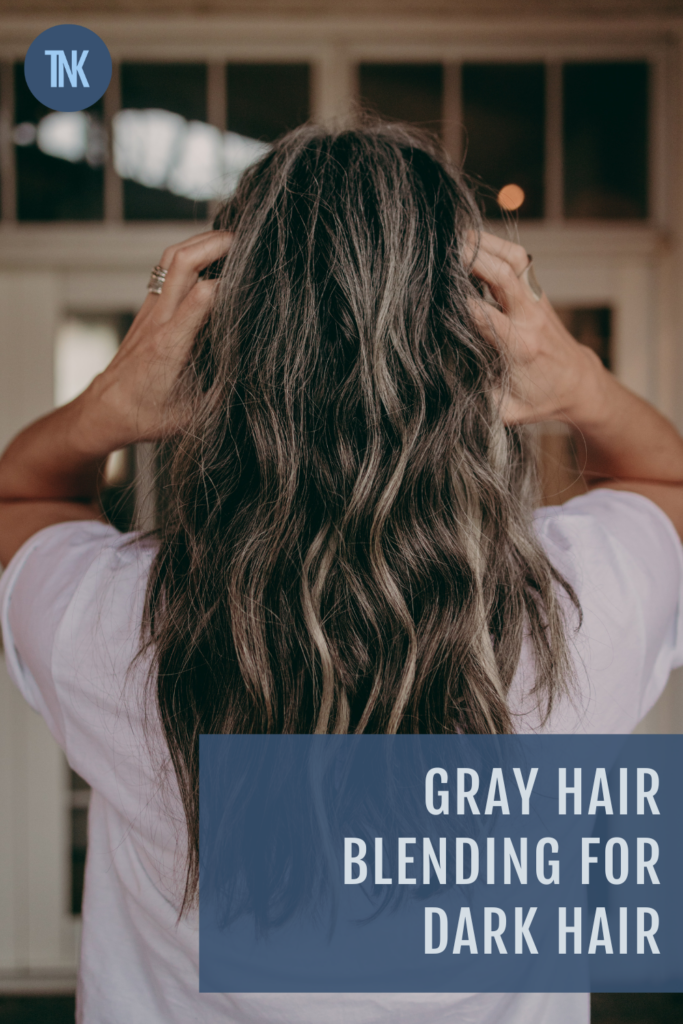
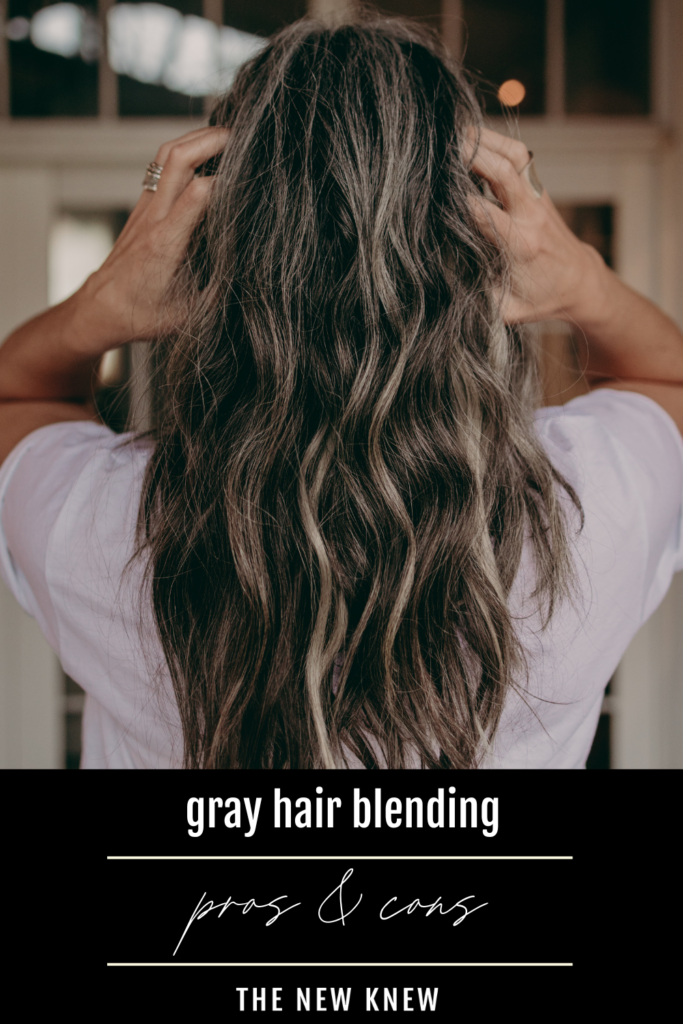
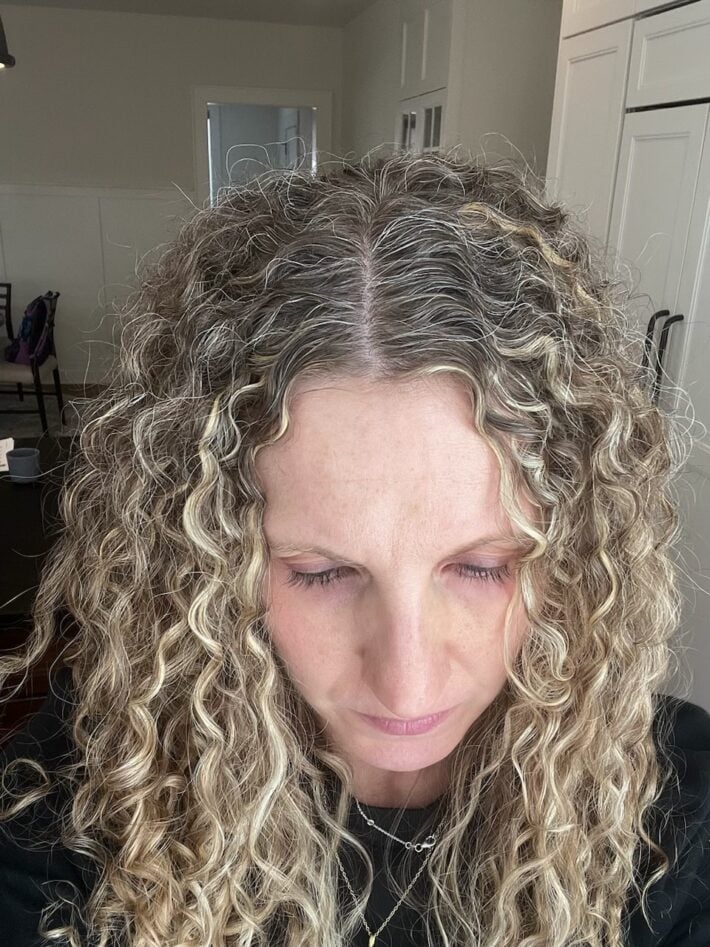
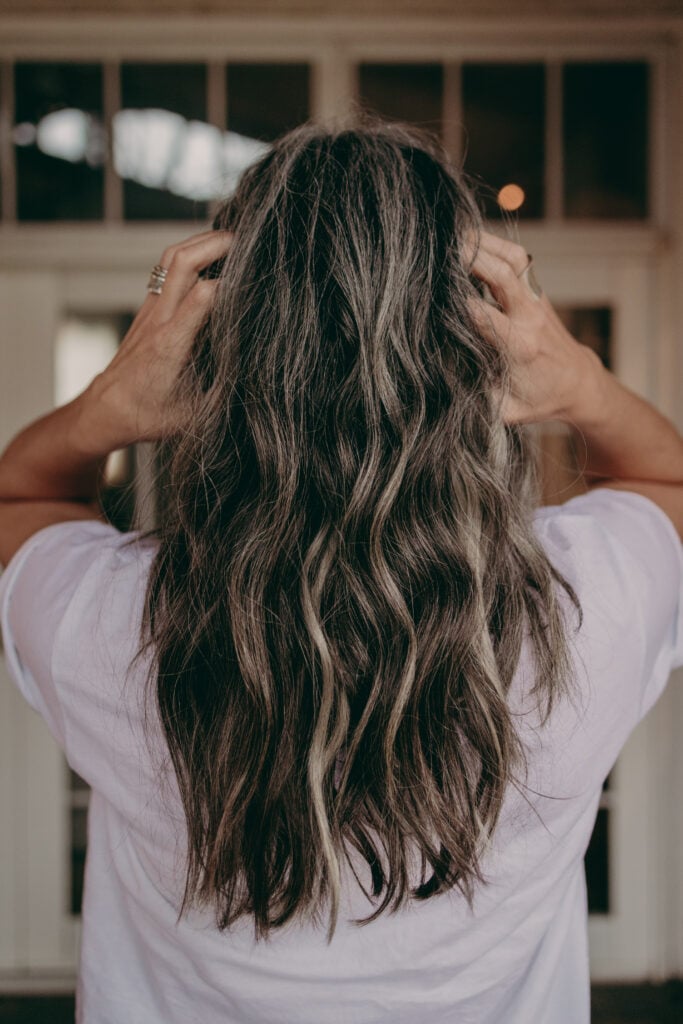
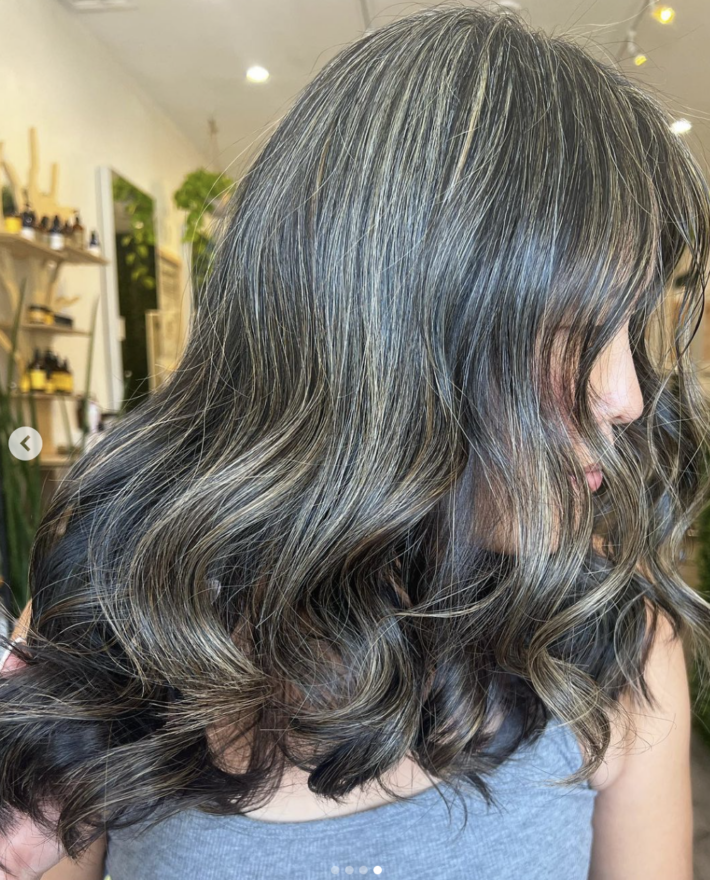
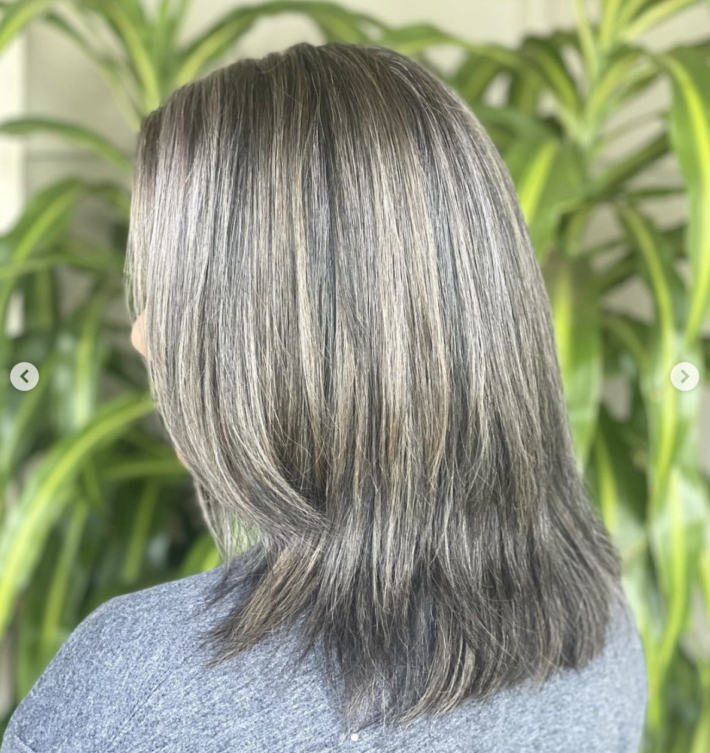
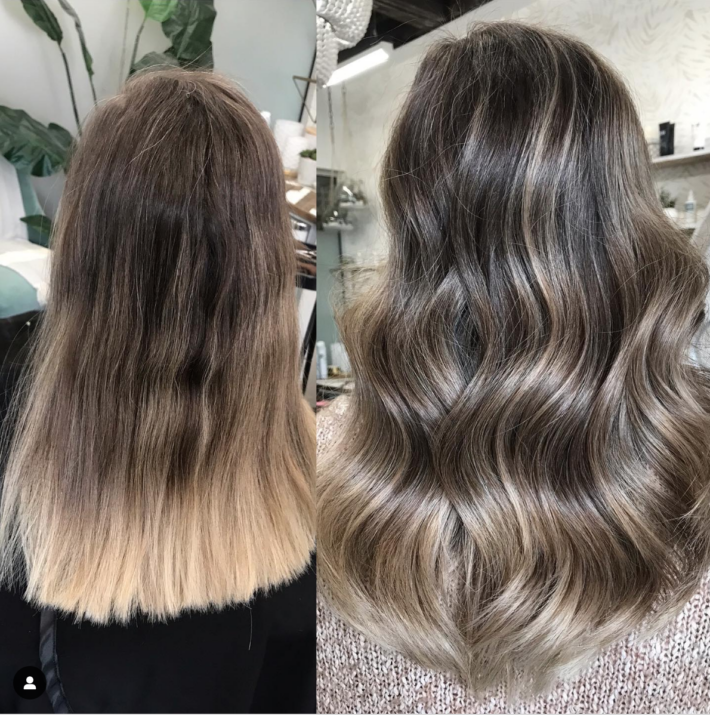
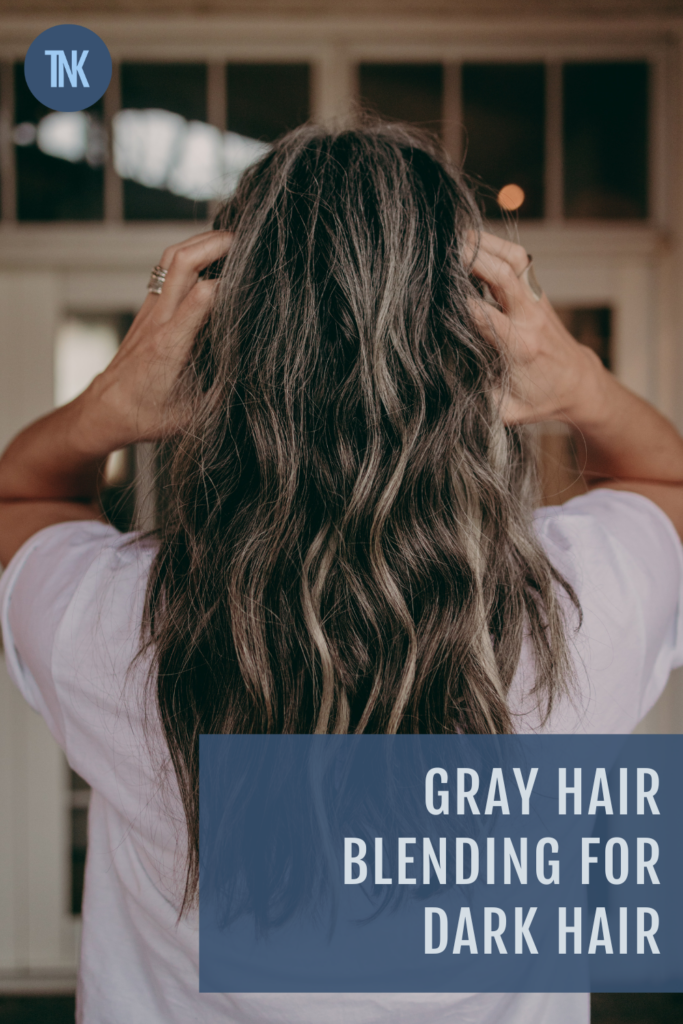
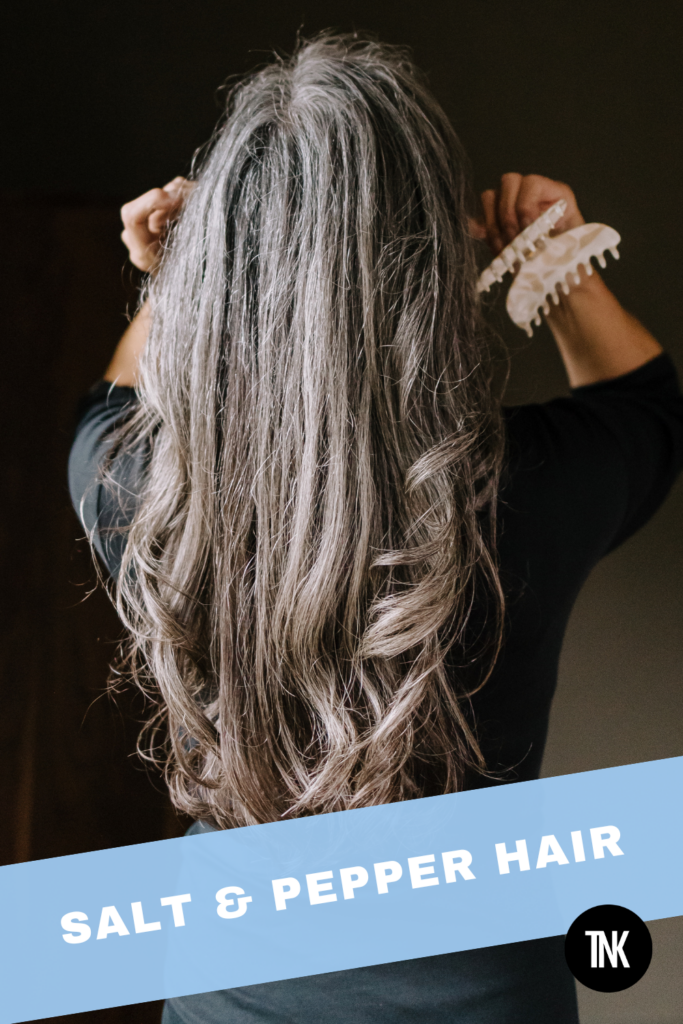
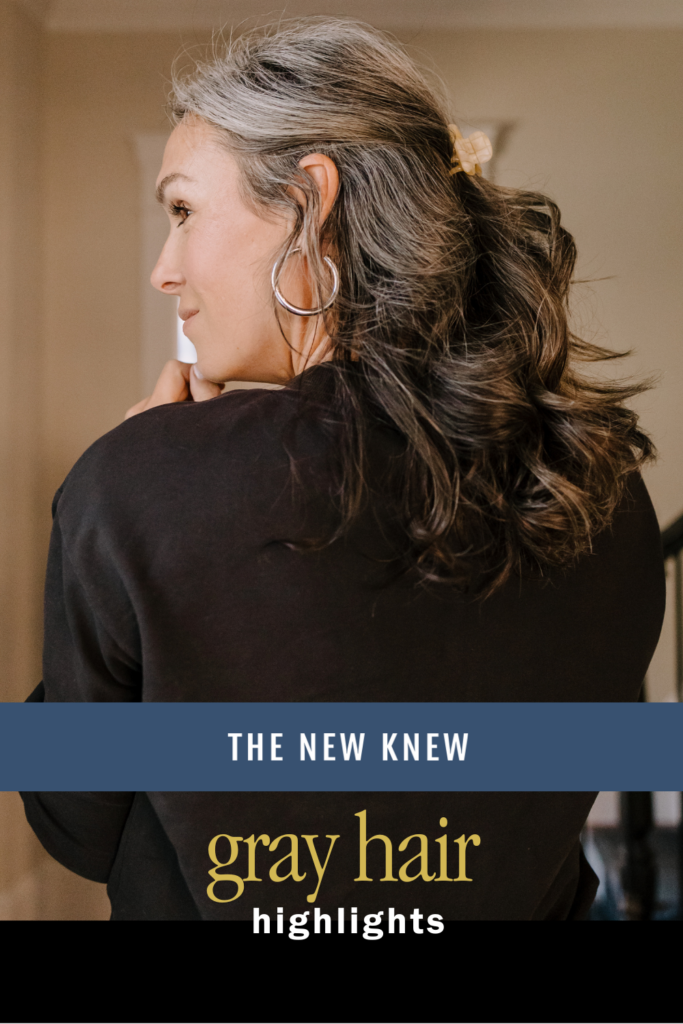
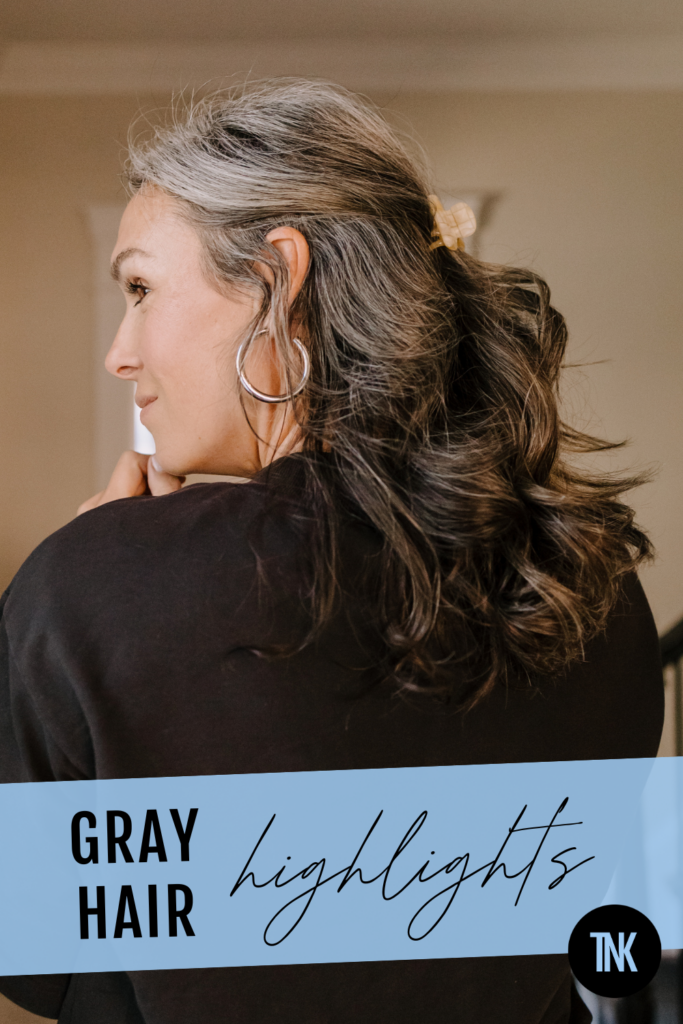
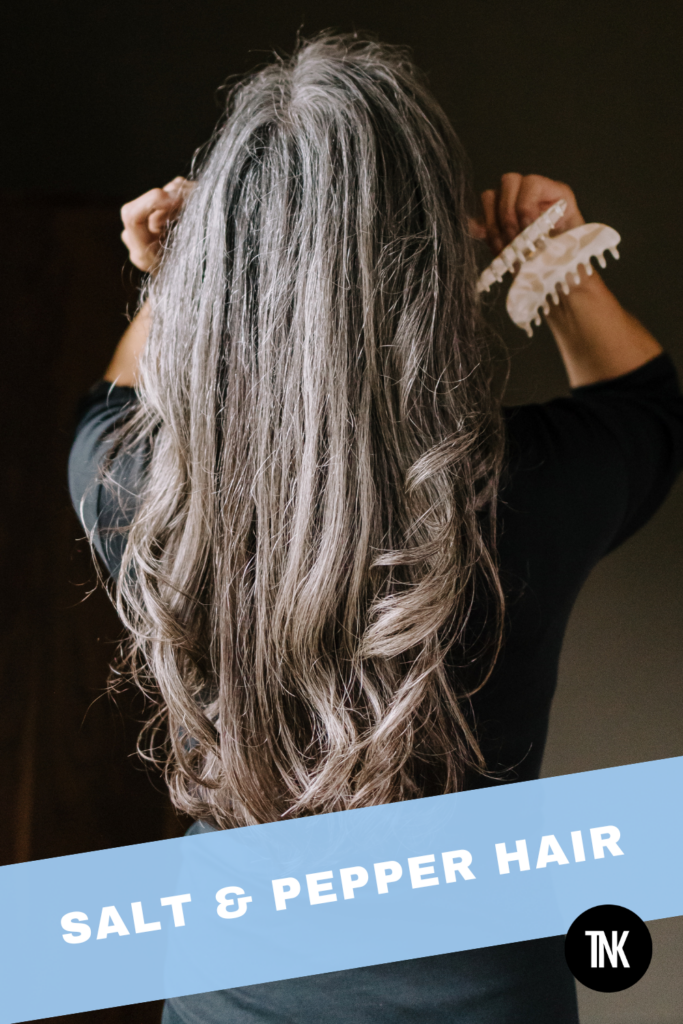
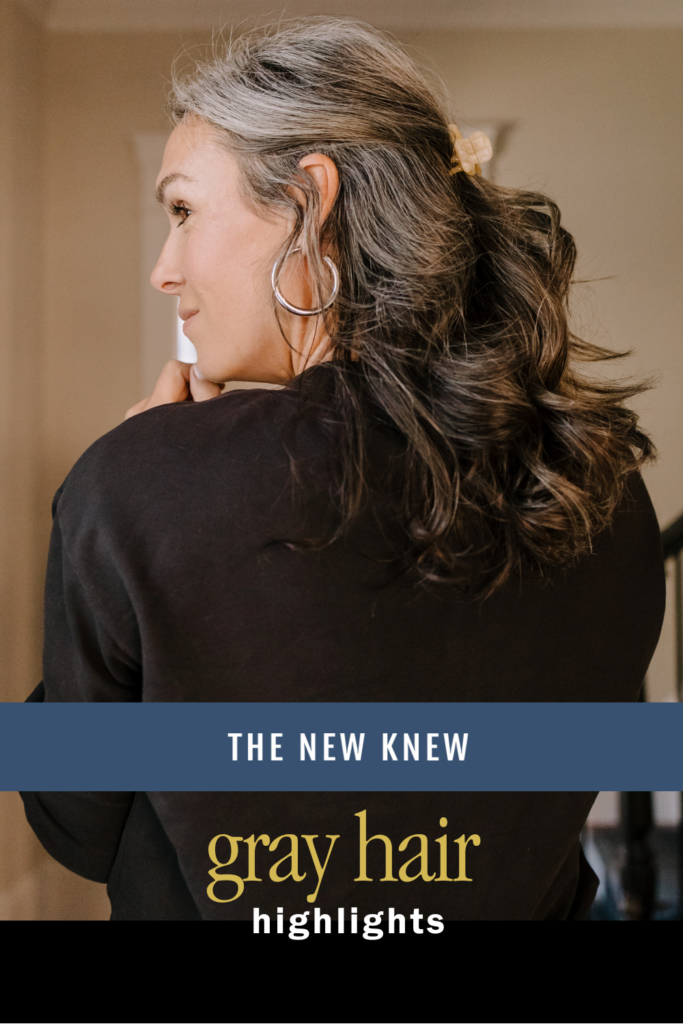
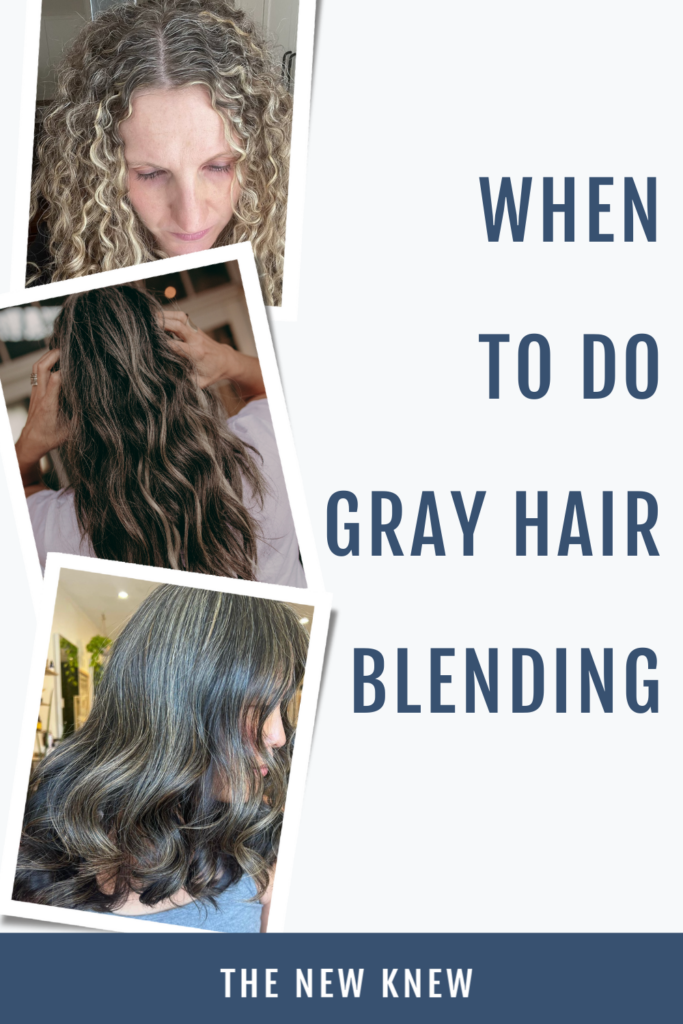
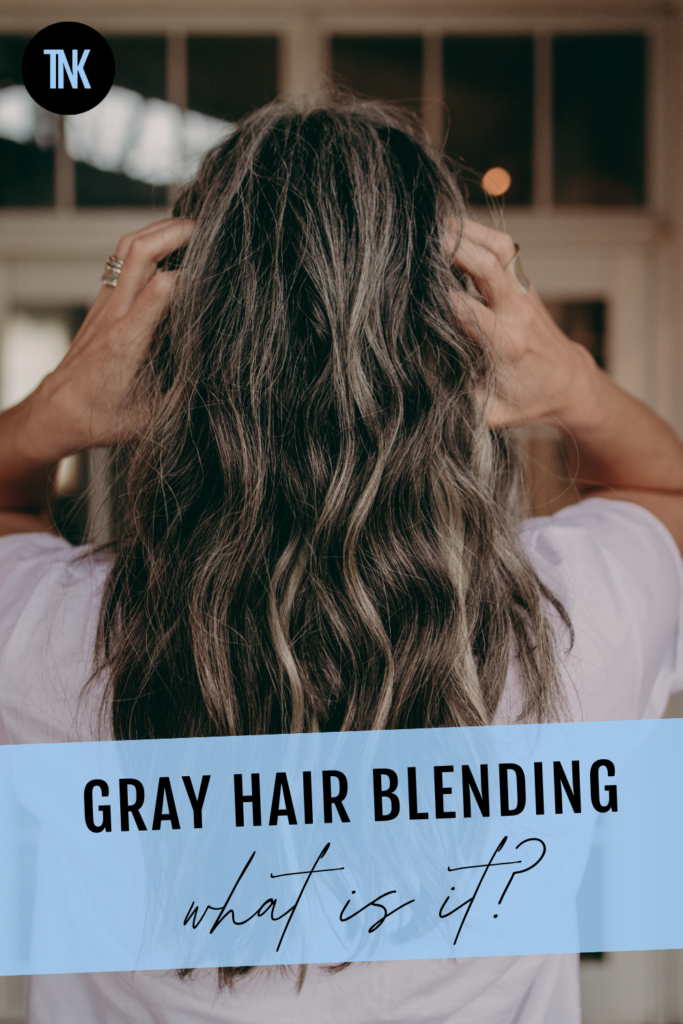
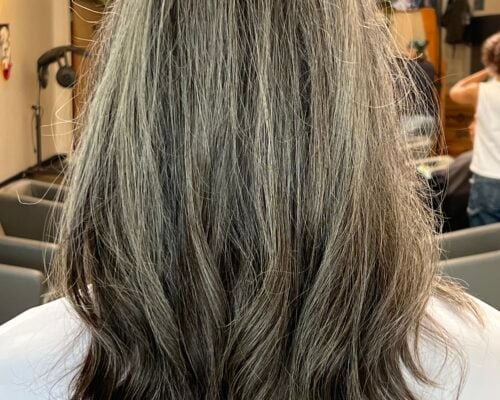
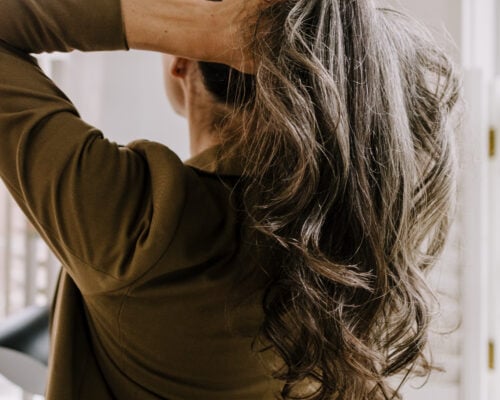
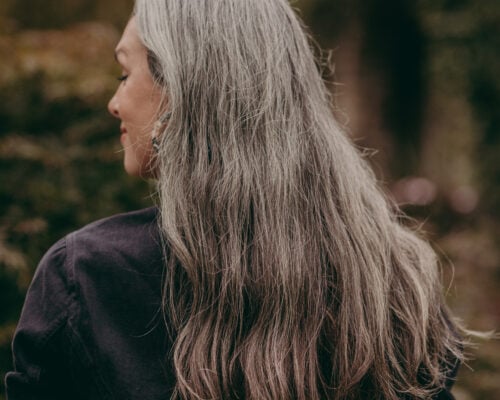
Daryl
December 8, 2023Hi Lisa!
I live in Alpharetta. Who is your color expert in Atlanta that you referenced?
Love your blogs (& hair)
Daryl
Lisa Fennessy
January 2, 2024Hi Daryl! I go to Jenn who owns Creature Studio in Inman ; )